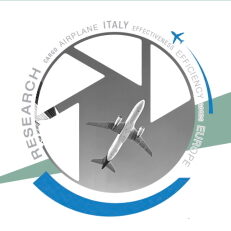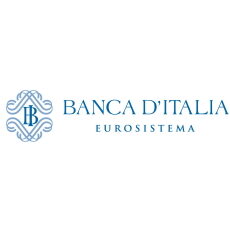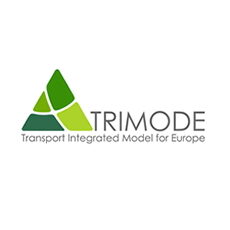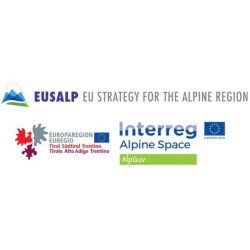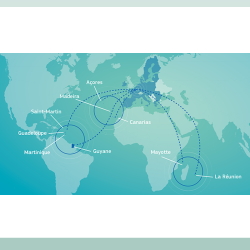- All
- African projects
- assessment
- assessment selected projects
- Assessment selected projects 2
- Assessment selected projects 3
- Assessment selected projects 4
- ASTRA
- Cost Benefit Analysis
- Electric mobility and ITS
- MOMOS
- planning
- planning selected projects
- planning selected projects 2
- planning selected projects 3
- planning selected projects 4
- planning selected projects 5
- projects
- Railways projects
- research
- research selected projects
- research selected projects 2
- research selected projects 3
- studies
- studies selected projects 1
- studies selected projects 2
- studies selected projects 3
- studies selected projects 4
- studies selected projects 5
- TRTingegneria
- TRUST
- urban mobility
- Airfreight transport in Italy, Cluster Cargo Aereo study The Cluster Cargo Aereo is a trade association of stakeholders operating in the air cargo market (forwarders, airlines, handlers). Its mission is to provide research, studies and statistics to promote an understanding of the sector and its challenges to relevant stakeholders. After its first study, released in 2019 and focusing on the supply of airfreight services (benchmarking of national and European airports competitiveness), the Cluster commissioned TRT a new study to better understand the airfreight demand and users preferences. TRT was committed to analyse the type of commodities and industrial sectors making the most use of airfreight services, identifying the factors that drive companies to modal and airport choice, including foreign terminals. The analysis was carried out through two main activities: a desk research, i.e. a statistical analysis of airfreight traffic flows (quantities/values) in the last 10 years and with respect to the most relevant types of commodities; a field research, namely a survey to a selection of relevant companies (export oriented manufacturers, freight forwarders, etc.) to gain insights on key research questions. With this study, TRT provided not only an up-to-date analysis of the national airfreight market, but also identified strategic actions for market development, particularly with respect to the sector-specific logistic needs coming from the survey. A particular focus was also devoted to Covid-19 emergency and to the related impacts on the airfreight sector. After the first study, presented in 2019 and focused on transport supply (competitiveness of national and European airports), and the second study on air freight transport demand of 2020, the Cluster has commissioned to TRT a new study in order to better understand the perception of the air cargo service in Italy. Therefore, TRT has realized a survey to the main manufacturing companies, integrated by an in-depth survey to the shipment companies, whose results have been introduced during the 5th Convention of the Air Cargo Observatory, where there was an audience of 200 stakeholders and companies of the sector. For more information (only available in italian) Airfreight transport in Italy, the study carried out by TRT. Go to the publication Digital conference for the presentation of the Cluster Cargo Aereo study. Milan, 26 October 2020. Download the presentation News (only available in italian) Press review by FEDESPEDI. Link Agroalimentare, ecommerce e aviocamionato: le tre scommesse del cargo aereo italiano. Aircargoitaly, 26 October 2020. Link Cluster Cargo Aereo e TRT – Secondo Studio Osservatorio Cargo Aereo. Fedespedi, 26 October 2020. Link La seconda edizione dell’Osservatorio cargo aereo: strategicità e potenzialità del trasporto aereo merci. Il giornale della logistica, 9 November 2020. Link La seconda edizione dell’Osservatorio cargo aereo: quando le merci volano. Il giornale della logistica, Dicembre 2020. Link
- Statistical sample survey on the international freight transport TRT has been again commissioned by the Banca d’Italia (Italian Central Bank) to carry out a four-year survey on the international freight transport, in order to: identify the unit costs of different transport modes for imports and exports; identify the components of ancillary costs; show in a matrix the abroad goods exchange; define the market share held by Italian actors in the maritime, air and rail transport sectors; estimate the turnover made by Italian ship-owners abroad. The surveys and analyzes carried out are used by the Banca d’Italia to estimate the Balance of Payments in Italy. As part of a consolidated partnership of more than twenty years, the activity constitutes the continuation of similar investigations conducted by TRT for Banca d’Italia since 1998. For more information (only available in italian) Survey on International Merchandise Transport 2023, June 2024. Link Survey on International Merchandise Transport 2022, June 2023. Link Survey on International Merchandise Transport 2021, June 2022. Link Survey on International Merchandise Transport 2020, June 2021. Link Survey on International Merchandise Transport 2019, June 2020. Link Survey on International Merchandise Transport 2018, June 2019. Link Survey on International Merchandise Transport 2017, June 2018. Link Survey on International Merchandise Transport 2016, July 2017. Link Italy’s international freight transport 2015, October 2016. Link The survey on the costs of international freight transport in Italy, September 2014. Link
- TRIMODE PROJECT: DEVELOPING FOR THE EUROPEAN COMMISSION A EUROPE-WIDE TRANSPORT MODEL INTEGRATED WITH ENERGY AND ECONOMY TRIMODE (TRansport Integrated MODel of Europe) has been developed to support policy assessment at the European level. Thanks to its modular structure a large variety of policy scenarios can be analysed and a wide set of impacts can be estimated. The overall TRIMODE integrated modelling system comprises several components belonging to three main blocks: a Transport network model, an Economy model and an Energy model. The geographical coverage of TRIMODE includes the EU countries; all Candidate and Potential candidate countries; UK, Iceland, Norway and Switzerland; other external zones. The zoning system is based on NUTS 3 zones. Within EU, sub-NUTS 3 zones are used where necessary, reaching a total of 1732 zones. The TRIMODE model covers the period between the year 2010 (base year) until the year 2050, providing results at 5 years steps The model was developed over the years 2016 to 2020 on behalf of the European Commission by the consortium led by TRT Trasporti e Territorio and composed by PTV AG, E3MLab, MDS Transmodal and M-Five as key partners and ISI Fraunhofer, BHL and INRIX as subcontractors. The TRIMODE component models are developed in VISUM and GAMS with all additional coding outside these tools handled by PYTHON. These models are implemented within a single software platform. A web-based user interface allows to set up, run and analyse model results. Project flyer – Download THE TRIMODE INTEGRATED MODEL FOR EUROPE Presented at the European Transport Conference (ETC) 2017, the article provides an overview of the TRIMODE model and its applications, with some details on the passenger demand model and the network model. – Download TRIMODE FREIGHT & LOGISTICS MODEL OF EUROPE Presented at the European Transport Conference (ETC) 2017, the article describes TRIMODE’s freight demand model, specifying how links between economic transactions and freight transport flows are managed. – Download LONG-DISTANCE, MULTI-MODAL FREIGHT IN A CONTINENTAL TRANSPORTATION MODEL Presented at the Transportation Research Board (TRB) 2018 (and selected for publication in the Transportation Research Record), the article explains how two key characteristics of freight transport – multimodality and logistics – are modelled in TRIMODE – Download TRIMODE: INTEGRATED TRANSPORT MODEL FOR EUROPE Presented at the Transportation Research Board (TRB) 2018 (and selected for publication in the Transportation Research Record), the article explains how two key characteristics of freight transport – multimodality and logistics – are modelled in TRIMODE. – Download ENERGY AND FLEET MODELLING WITHIN THE TRIMODE INTEGRATED TRANSPORT MODEL FRAMEWORK FOR EUROPE Presented at the EURO Working Group on Transportation Meeting (EWGT) 2018, the article introduces TRIMODE’s energy and fleet model and explains its link to transport demand and the network model. – Download
- Corridor Munich-Verona – Study and analysis of the forecasted passenger traffic flows and the related offers of long-distance trains based on the future infrastructure This study was a modelling application targeted at forecasting future rail passenger demand on the Verona – Munich rail corridor. The opening of the Brenner Basis Tunnel (BBT) is expected by the year 2030. Its effect will be to save more than one hour from rail travel time between Munich and Verona. The full completion of infrastructure should provide additional time savings by the year 2040. This study, using modelling tools, aimed at forecasting the additional rail passenger demand onto the corridor as effect of new rail supply in order to provide inputs for the design of long-distance rail passenger services on the corridor. Four future scenarios were explored. All scenarios shared the same demographic and economic assumptions influencing the modification of the overall transport demand in the area. Then, each scenario considered a specific configuration of passenger rail services on the Corridor, especially in terms of frequencies and stops. The forecasts were based on the results of the two models: the TRUST model used by TRT dealt with long-distance origin-destination pairs at NUTS3 level, while the regional demand was simulated in more spatial detail by means of the VMÖ 2025+ model used by the Austrian company TRAFFIX. The project was managed by EBP Schweiz AG. For more information, please check BBT Brenner Base Tunnel website
- Study on Light Commercial Vehicles (LCVs) fleet and activity in EU TRT has led an international consortium of experts covering 10 EU Member States with the objective to cover the lack of information and data on LCV fleet and activity in EU-28 The study outputs consist of: DBs on LCVs broken down by fuel type, emission standard and age of the vehicle for 10 Member States (64% of EU-28 fleet) Assess the relationship between annual mileage and age of the vehicle in 5 Member States Estimate fixed (taxes) and operating costs (maintenance, insurance, tools) of LCVs Analyse the LCV uses and the activity sectors in EU Review the legal and fiscal regime of the LCVs in EU-28 [tw_button icon=”” link=”https://www.trt.it/archivio-progetti/” size=”small” rounded=”false” style=”flat” hover=”default” color=”#223468″ target=”_self”]Projects[/tw_button]
- Overview of existing pricing components that influence the competitiveness between road and rail freight transport The Alpine regions are particularly sensitive to negative environmental and social impacts caused by the road traffic flow of freight and passenger transport through the Alps. To tackle this challenge, the harmonisation and implementation of modal shift policies is of utmost relevance. EUSALP Action Group 4 on Mobility (AG4) has commissioned to TRT Trasporti e Territorio a study to support its strategy in designing a proper mix of modal shift policies. TRT provided an overall analysis of existing policy-induced pricing components affecting the competitiveness between road and rail freight transport in and through the Alps. The objectives of the study were: To collect detailed information on policy-induced pricing components that influence road and rail transport cost; To develop a comparative illustration of them for supporting political discussion and communication; To provide preliminary recommendations to improve the instrument mix for balancing the transport modal split in the Alpine Region. [tw_button icon=”” link=”https://www.trt.it/archivio-progetti/” size=”small” rounded=”false” style=”flat” hover=”default” color=”#223468″ target=”_self”]Projects[/tw_button]
- Modal shift in European transport: a way forward The study, developed for the TRAN committee of the European Parliament for the Year of Multimodality (2018), provides a comprehensive analysis of the progress and potential of modal shift in the EU from road to more sustainable transport modes, with respect to the policy objectives set in the 2011 White Paper on transport. The study focuses both on passenger and freight transport, highlighting the main barriers and factors that are hampering a more effective modal shift at EU level, providing policy recommendations for the way forward. The analysis carried out highlights that, at EU level, a modal shift from road to more sustainable transport means (rail, inland waterways, public transport) is taking place at a lower pace, compared to the objectives previously set. The relevant measures proposed, besides broadly confirming the actions so far undertaken, include the increase of investments on multimodal projects, the improvement of multimodal access and connectivity of all the EU regions and to enhance the use of ITS technologies. [tw_button icon=”” link=”https://www.trt.it/archivio-progetti/” size=”small” rounded=”false” style=”flat” hover=”default” color=”#223468″ target=”_self”]Projects[/tw_button]
- Identification and collection of a set of indicators for the description of the urban sustainable mobility in European cities The SUMI project provided technical support for the identification and the collection of a set of sustainable urban mobility indicators in 50 European large and small urban areas. Main project activities were related to: providing rigorous and consistent methodologies for acquisition, harmonisation and analysis of data for the calculation of indicators; this included the definition of a «mentor» for each indicator, i.e. a reference experts capable to sort out all related technical issues; giving technical support to the urban areas and systematically collecting their hands-on experiences; appointed «urban area coaches» had the responsibility to establish direct links between the project consortium and the urban areas and help city administrations to gather the needed data; carrying on consultation, capacity building and dissemination actions addressed to subjects both inside and outside of the project; preparing realistic, harmonised and sound recommendations to the Commission for further improvement and extension of the indicator set; definition of an online benchmarking tool, available for European and non-European cities, aimed at comparing the indicators of each urban area with reference average values. TRT has been a key partner of the project, with direct responsibility in the coordination of data acquisition and technical assistance to the local experts, being «mentor» for four different mobility indicators. In addition, TRT experts have been «urban area coaches » for cities in Italy. The SUMI indicator set For more information: Webpage of the SUMI project on the European Commission portal. It contains the indicator set, the guidelines for the calculation of values and the benchmarking tool for the comparison of results Entire SUMI indicator set (.zip file) General harmonized guidelines for calculating the indicators (.pdf file) E-course to support cities with the application of the SUMI indicator set. Registration needed, free of charge
- Study on the physical accessibility of the Outermost Regions of France, Spain and Portugal The objective of the study was to develop a list of transport projects to improve the connectivity of the nine Outermost Regions of France, Spain and Portugal. The study aimed to identify the physical disadvantages, bottlenecks and missing links of the Outermost Regions. This comprehensive analysis was needed for the TEN-T policy to ensure connectivity to all European regions by 2050. The study provided a comprehensive information base of the observed transport conditions of the Outermost regions and a proposition of well-justified actions to improve the overall physical connectivity. In general, the study: identified existing transport links between the EU Member States and the Outermost Regions as well as among and between the Outermost Regions, including regional hubs; identified existing transport links between the Outermost Regions and their neighbouring countries, including regional hubs; developed an assessment of insufficient, missing and promising links; identified key investment needs regarding maritime and air transport; developed an evaluation how to strengthen the Motorway of the Sea policy and its funding; provided recommendations and a list of projects including the sources of funding. This study analysed the observed state of the transport connectivity of (i) Guadeloupe, French Guiana, Martinique, Réunion, Saint-Martin, Mayotte (France), (ii) the Azores and Madeira (Portugal) and the Canary Islands (Spain). These Outermost Regions strongly rely on air and maritime transport connections for accessing to basic goods and services, as well as for their regional economic development. The study found that, in general, the Outermost Regions are well connected with their mainland, both in terms of air and maritime transport. On the other hand, the connectivity with neighbouring regions and countries remains limited. Developing regional connectivity increases territorial cooperation and stimulates regional economic development. Therefore, policy recommendations have suggested to stimulate the level of regional integration, by optimising conditions for operators to provide regional connections through more liberal traffic rights and balanced taxation. In addition, policy recommendations on territorial cohesion aimed at improving the mobility of the residents of the Outermost Regions, as well as the conditions for transport of goods. The recommendations to support general connectivity needs focussed on the development of resilient transport infrastructures and funding options to accelerate the development of the TEN-T in the Outermost Regions.

